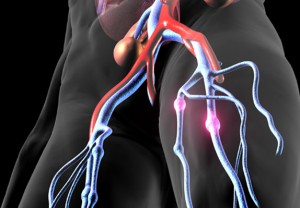In a follow-up study from the same center, no DVTs were found in the 60 patients who were given either enoxaparin, 20 or 40 mg daily. Another randomized trial failed to detect a difference in VTE rates in 136 major thoracolumbar reconstruction patients who had received prophylaxis with both GCS and either IPC or the VFP. 
Given the paucity of data, we cannot make firm recommendations about thromboprophylaxis in spinal surgery patients. However, their risk of VTE appears to be low when any of the following methods of prophylaxis is routinely used: postoperative LDUH or LMWH; or intraoperative GCS or IPC, followed by postoperative GCS or IPC. Certainly, for spine surgery patients with additional VTE risk factors, such as a neurologic deficits or prolonged immobility, advanced age, known malignancy, previous VTE, or an anterior surgical approach, prophylaxis with one of these options is recommended http://www.hqcanadianpharmacy.com.
Recommendations: Elective Spine Surgery
- For spinal surgery patients with no additional risk factors, we recommend against the routine use of any thromboprophylaxis modality, apart from early and persistent mobilization (Grade 1C).
- We recommend that some form of prophylaxis be used in patients undergoing spinal surgery, who exhibit additional risk factors, such as advanced age, known malignancy, presence of a neurologic deficit, previous VTE, or an anterior surgical approach (Grade 1B).
- For patients with additional risk factors, we recommend any of the following prophylaxis options: postoperative LDUH alone (Grade 1C + ); postoperative LMWH alone (Grade 1B) ; or perioperative IPC alone (Grade 1B). Other considerations include perioperative
GCS alone (Grade 2B) or perioperative IPC combined with GCS (Grade 2C). In patients with multiple risk factors for VTE, we recommend combining LDUH or LMWH with GCS and/or IPC (Grade 1C+).
Isolated lower extremity injuries in Canadian ed Pharmacy
Lower extremity fractures below the femur are very common in persons of all ages. In addition to fractures, this topic includes ligament and cartilage injuries of the knee and ankle, and rupture of the Achilles tendon. The popularity of recreational sports has contributed to an increase in these injuries in younger patients. Although more below-knee fractures are being surgically repaired, sometimes without hospital admission, many are managed using plaster casts or braces. The epidemiology and prevention of VTE after lower extremity injuries have, unfortunately, been poorly studied. Patients with polytrauma, and those with femoral or pelvic fractures, are considered in section 5.1.
Four published prospective studies routinely screened for asymptomatic DVT, using contrast venography, in patients with isolated lower extremity fractures who had not received thromboprophylaxis. Hjelmstedt and Bergvall found DVT in 45% of 76 patients with tibial fractures, and proximal DVT in 8% of patients.